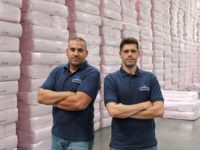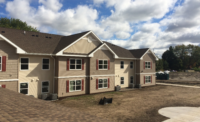Robert Fortunato—with full support of his family—decided to turn the remodeling of his home into a prime example of energy efficiency and sustainability for the building community. The project, located in Hermosa Beach, Calif., is a partnership with the city and is designed to fulfill a state objective for all new residential construction in California to be zero net energy in less than a decade.
A key motivating factor for the Fortunato family was to demonstrate the ability to economically build and retrofit with energy efficiency and sustainability in mind. Savings will accrue to persons living and/or working in buildings incorporating the techniques and elements, relating energy savings and improved indoor air quality and ultimately decreased societal and environmental costs.
Southern California Edison selected the Green Idea House to be the cornerstone of its net zero energy initiative from design to occupancy. Methods and results are being documented to facilitate the transformation of residential construction to net zero by 2020. The project achieved a 97.5 percent waste diversion rate. Its ongoing collaboration with the city, local experts and the community can influence others to reduce energy, water, waste, toxicity and greenhouse gas emissions.
Fortunato says he decided to build green for several reasons:
“For the economy: We have worked and traveled extensively outside the U.S. and the rest of the world is using less energy and materials than we are. We should be setting the example. Not because it is just a nice thing to do but because this is the next industrial revolution and we can’t afford to miss it.
“For our health: We live 10 blocks from the ocean and should have very clean air. We don’t. The soot that is the byproduct of burnt carbon accumulates on my windowsills. Burnt carbon causes heart disease, lung disease and cancer. That is why we capped the gas line and the house is not only net zero energy but zero carbon.
“For our wallet: I am trained as an economist, not an environmentalist. If we are using less material, creating less waste, using waste products in the building process, using less embodied energy and less toxic materials—it should cost less. That is what we set out to prove—and we did it.”
IT’S ABOUT LIME
For the exterior cladding, Fortunado decided to go with a stucco system.
“We used a metal cladding on parts of the façade and to cap the eves with blind gutters. The rest of the building is recycled cement base and stucco, and lime plaster for two very prominent accent areas,” says Fortunato. “The durability, recycled content and the price competitiveness of the stucco were an immediate draw. The lime plaster, with lower embodied energy, was a bonus as well.”
Hawthorne-based plastering company B&K Plaster Corp. won the bid for this project based on its extensive experience with exterior plaster applications. The company specializes in exterior lath and plaster work, as well as some interior plastering and ceiling work. The company concentrates its work in the greater Los Angeles area.
Its President/Owner Danny Bateman says business is beginning to see an up-tick.
“Over the last few months, it’s been great,” he reports. “[But] it’s been up and down since 2008. We just have to sustain the work. If we can do that, it’s going to be a really positive thing.”
The company was excited to land the bid of such an important project as the Green Idea House.
B&K elected to use Merlex Stucco’s product line for this project, in large part due to the recycled content, energy efficiency, local sourcing and reduced embodied energy.
“[Merlex] worked with the owner, who served as the GC, and his green building contractor (Harding Construction of Long Beach),” says Nick Brown, president of Merlex Stucco. “They chose a novel insulation board that provided insulation R-value sufficient to make his house net-zero, while still maintaining the vapor permeability/breathability of his structure, which was important to him. We designed the cladding system to meet those guidelines and work in conjunction with the insulation board, while staying true to the Fortunato’s goals to use the most sustainable, attractive, exemplary plaster system on their demonstration project, which will also be their home.”
Products that were used on the Green Idea House include 33 percent Recycled Stucco product (based on recycled concrete aggregate), and Vero Antiqua lime plaster (from Merlex’s Vero Venetian plaster subsidiary), which has 28 percent lower embodied energy than cement stucco and incorporates 65 percent recycled marble aggregate. With all products combined, the entire plaster system used 69 percent recycled content, says Brown.
Although the scope of the project was a home renovation, Bateman says the job was more like working on new construction. The project took the company approximately two months.
“What is different about this project is that we used a lot of product that had a lot of recycled content in it,” says Bateman. “For instance, when we did our two coats of cement, we used recycled aggregate, which we had never used before. There wasn’t a learning curve and it didn’t slow us down.”
Bateman credits Merlex and Brown not only for the quality products the team worked with but also for on-site visits to the site to assist with questions and recommendations on the stucco application overall. Fortunato served as the general contractor and managed all of the subs.
“Danny and his crew at B&K were a pleasure to work with,” he says. “They solved some tricky problems and delivered a quality product on time and in budget. Everyone who visits the building comments on the quality of the materials and the workmanship. The fact that it turned out stunningly beautiful is a testimony to the efforts of Merlex, Vero and B&K, all working together to make sure the project came out perfectly.” W&C










Report Abusive Comment